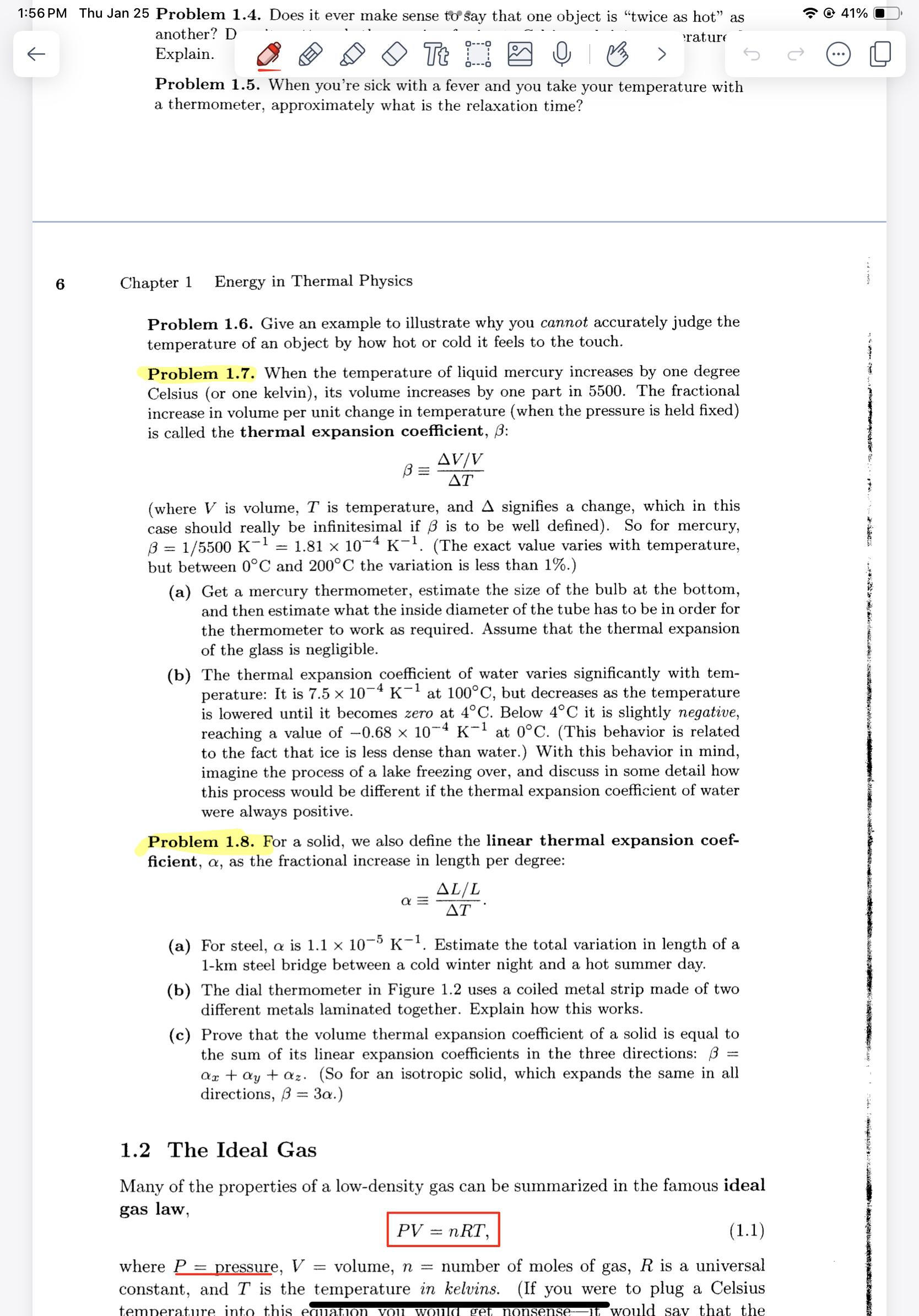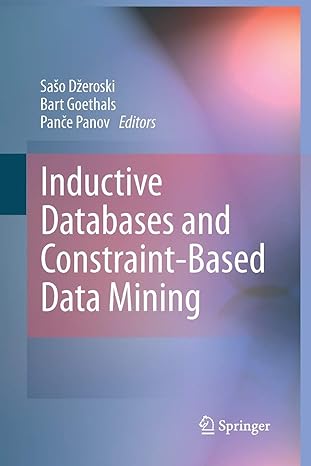1:56 PM Thu Jan 25 Problem 1.4. Does it ever make sense to say that one object is twice as hot as another? D Explain.
1:56 PM Thu Jan 25 Problem 1.4. Does it ever make sense to say that one object is "twice as hot" as\ another? D\ Explain.\ Problem 1.5. When you're sick with a fever and you take your temperature with\ a thermometer, approximately what is the relaxation time?\ 6\ Chapter 1 Energy in Thermal Physics\ Problem 1.6. Give an example to illustrate why you cannot accurately judge the temperature of an object by how hot or cold it feels to the touch.\ Problem 1.7. When the temperature of liquid mercury increases by one degree Celsius (or one kelvin), its volume increases by one part in 5500 . The fractional increase in volume per unit change in temperature (when the pressure is held fixed) is called the thermal expansion coefficient,
\\\\beta :\
\\\\beta -=(\\\\Delta (V)/(V))/(\\\\Delta T)\ (where
Vis volume,
Tis temperature, and
\\\\Delta signifies a change, which in this case should really be infinitesimal if
\\\\beta is to be well defined). So for mercury,
\\\\beta =(1)/(5500)K^(-1)=1.81\\\\times 10^(-4)K^(-1). (The exact value varies with temperature, but between
0\\\\deg Cand
200\\\\deg Cthe variation is less than
1%.)\ (a) Get a mercury thermometer, estimate the size of the bulb at the bottom, and then estimate what the inside diameter of the tube has to be in order for the thermometer to work as required. Assume that the thermal expansion of the glass is negligible.\ (b) The thermal expansion coefficient of water varies significantly with temperature: It is
7.5\\\\times 10^(-4)K^(-1)at
100\\\\deg C, but decreases as the temperature is lowered until it becomes zero at
4\\\\deg C. Below
4\\\\deg Cit is slightly negative, reaching a value of
-0.68\\\\times 10^(-4)K^(-1)at
0\\\\deg C. (This behavior is related to the fact that ice is less dense than water.) With this behavior in mind, imagine the process of a lake freezing over, and discuss in some detail how this process would be different if the thermal expansion coefficient of water were always positive.\ Problem 1.8. For a solid, we also define the linear thermal expansion coefficient,
\\\\alpha , as the fractional increase in length per degree:\
\\\\alpha -=(\\\\Delta (L)/(L))/(\\\\Delta T)\ (a) For steel,
\\\\alpha is
1.1\\\\times 10^(-5)K^(-1). Estimate the total variation in length of a 1-km steel bridge between a cold winter night and a hot summer day.\ (b) The dial thermometer in Figure 1.2 uses a coiled metal strip made of two different metals laminated together. Explain how this works.\ (c) Prove that the volume thermal expansion coefficient of a solid is equal to the sum of its linear expansion coefficients in the three directions:
\\\\beta =
\\\\alpha _(x)+\\\\alpha _(y)+\\\\alpha _(z). (So for an isotropic solid, which expands the same in all directions,
\\\\beta =3\\\\alpha .)\ 1.2 The Ideal Gas\ Many of the properties of a low-density gas can be summarized in the famous ideal gas law,\
PV=nRT,\ where
P=pressure,
V=volume,
n=number of moles of gas,
Ris a universal constant, and
Tis the temperature in kelvins. (If you were to plug a Celsius

Step by Step Solution
There are 3 Steps involved in it
Step: 1

See step-by-step solutions with expert insights and AI powered tools for academic success
Step: 2

Step: 3

Ace Your Homework with AI
Get the answers you need in no time with our AI-driven, step-by-step assistance
Get Started


